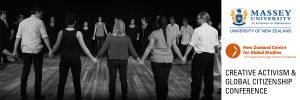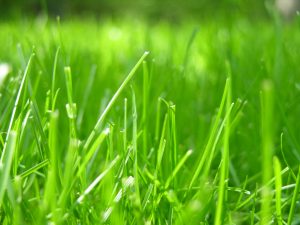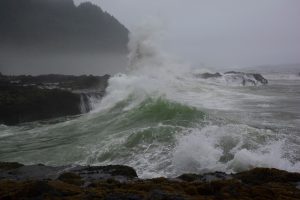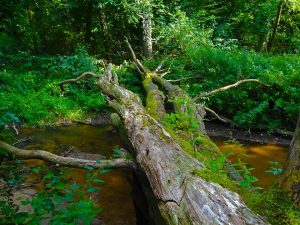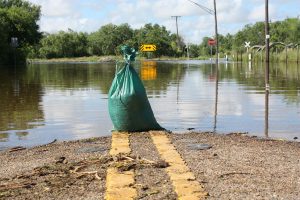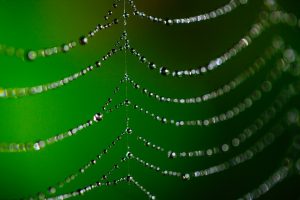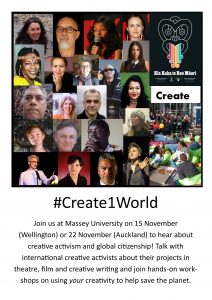 Want some Create1World 2018 info to put up on your class noticeboard? Here’s our latest flyer. Click here Create1World 2018 Flyer PDF for a PDF for you to download!
Want some Create1World 2018 info to put up on your class noticeboard? Here’s our latest flyer. Click here Create1World 2018 Flyer PDF for a PDF for you to download!
Category Archives: Wellington
Create1World 2018
Create1World 2018
Nau mai, haere mai. Welcome to the Create1World Competition and Conference information pages – Join us to create one world through expressive arts and creativity! Hono atu ki te whakataetae Create1World. Mahi tahi mo te rangimarie.
Massey University invites high school students in years 9-13 to enter the 2018 Create1World competition, and/or to join us for a fabulous day of creative inspiration including local and international panellists answering your questions, along with performances, workshops and activities.
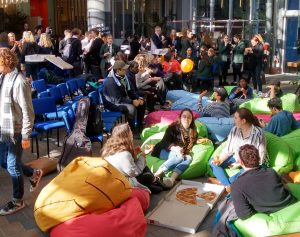 The competition asks you to produce a creative piece that encourages audiences to join together as a global community and solve some of the big problems we face as a planet. It could be a video, song, poem, short story, speech or theatre performance – your choice – but it must help us think about ways of working collaboratively for the betterment of all humanity. There are cash prizes!
The competition asks you to produce a creative piece that encourages audiences to join together as a global community and solve some of the big problems we face as a planet. It could be a video, song, poem, short story, speech or theatre performance – your choice – but it must help us think about ways of working collaboratively for the betterment of all humanity. There are cash prizes!
“We are still raving about it.” (Teacher, Wellington)
The conference days are free to attend, and give you a feast of creative inspiration from other young people and leading artivists (that’s artists who use their creativity to generate change)! There’s one conference at Massey Wellington, 9am – 3pm on November 15, and one at Massey Auckland, 9am – 3pm on November 22. We provide morning tea and lunch, a goody bag, and a wealth of information and inspiration about creativity and global citizenship.
If you already know you want to come to a Create1World conference day near you – please register here: https://docs.google.com/forms/d/e/1FAIpQLSeNlSNKwVI01F44LTWZ0uiyuYKP0JsUi1EcbPZo3JH33UCvOw/viewform Registration for the Auckland event has been extended until 5pm on November 8, 2018.
You can attend a conference day without having to enter the competition – but we really hope you’ll do both! It’s great to see what ideas everyone has and share our own Kiwi young people’s creativity alongside our featured local and international artists’ stories about their successful creative journeys.
 We are very grateful to New Zealand National Commission for UNESCO for supporting Create1World, including with prizes, and travel support for participants (if your school needs help with travel for students, please contact us on cre8oneworld@gmail.com to discuss – we want to see wide participation at Create1World!).
We are very grateful to New Zealand National Commission for UNESCO for supporting Create1World, including with prizes, and travel support for participants (if your school needs help with travel for students, please contact us on cre8oneworld@gmail.com to discuss – we want to see wide participation at Create1World!).
If you’d still like a bit more of a sense of what it’s like to come to a Create1World Conference before you sign up, check out the Radio New Zealand story here: http://www.radionz.co.nz/national/programmes/standing-room-only/audio/201807707/creative-activism
So get creating and registering, and come join us for Create1World 2018!
- Competition Details and How to Enter
- Competition Terms and Conditions
- What happens at a Create1World Conference day?
- About your hosts
- Contact us
“Thank you so much for such an amazing conference today. I had little to no idea what was going to happen and it completely blew my mind how well put together it was. It was so interesting and fascinating to hear different perspectives from not only the panel internationally and domestically, but as well as from teachers/tutors within Massey University. Thank you so much once again❤️” (Student, Auckland)
Summer Scholarship Opportunity
College of Humanities and Social Sciences
Summer Scholarship 2017-2018
Information for student applicants
General information:
- Purpose
The CoHSS Massey University Summer Scholarship is offered to provide senior students with the opportunity to experience supervised research over the summer semester.
- Tenure and value
Each scholarship will be offered to the value of $5000. The scholarships will be tenable for a period of approximately eight weeks and will represent a full-time commitment to the project (except for public holidays).
- Eligibility
The scholarship is open to students who are intending to enrol at Massey University in 2018 and who will be studying at 400 level or above in the Colleges of Humanities and Social Sciences. Applicants must be New Zealand citizens or permanent residents.
Conditions
- The scholarships may be held in conjunction with other scholarships, bursaries and stipends if the other award so allows.
- A Scholarship may be terminated by the Pro Vice Chancellor on receipt of an adverse report from the relevant Head of School/Institute/Centre.
- Summer Scholars will be expected to enrol for 2018 courses. At the end of the project the Scholar will submit a report to the Team Leader of the Project.
Payments
Each scholarship will be paid in two instalments, one at the start of the project and one upon receipt of the project report.
Project information:
Project Title: Releases and Reception of Eraserhead (David Lynch, 1977)
Supervisor: Dr Claire Henry, School of English and Media Studies (Wellington campus)
Project Description:
This project involves undertaking a piece of preliminary research for Dr Claire Henry’s proposed monograph on David Lynch’s 1977 cult film, Eraserhead, which is intended for publication with Wallflower Press (a Columbia University Press imprint) in the “Cultographies” series. The summer scholar’s project will facilitate an accelerated initial research phase and support the submission of Dr Henry’s book proposal in early 2018.
The monograph will in part assess how academic reception of Lynch’s film maps against its reception by audiences. The summer scholar’s task will be to research this latter aspect of reception, by collating and analysing data focused on how critics and audiences received Eraserhead at different stages of release. The summer scholar will gather film reviews and other qualitative and quantitative data on the reception of the film (and subsequent releases on VHS/DVD), and enter the sources into the referencing software, EndNote. The summer scholar’s research will be an important foundation for the encompassing analysis of Eraserhead’s cult status in the monograph, an analysis that contextualises the film not only within film theorists’ understandings (such as auteur studies of David Lynch and theories of cult media) but also within the different responses of critics and audiences over the years since the film’s initial release 40 years ago.
Tasks:
Collate reviews of Eraserhead
- Locate reviews of the film in mainstream and fan media, save PDF copies, and accurately enter information into EndNote;
- Compare and analyse the reviews, writing a report to categorise the reviews and identify common themes and interpretations.
Research the releases of Eraserhead
- Identify the cinema/VHS/DVD/online releases of the film, including dates and places, audience and box office figures (where available);
- Identify any variations in the text between releases (eg. ‘director’s cut’, censored versions) and extras accompanying the releases (eg. DVD extras such as behind-the-scenes documentaries, interviews, or additional short films).
Research the contribution of actor Jack Nance to the cult status of the film
- Research the actor’s career, relationship with David Lynch, and mysterious death;
- Compile notes and sources on how Jack Nance’s star image and cult fandom contributed to Eraserhead’s cult status over time;
- Maintain an annotated bibliography and accurate Endnote references for sources on this topic.
Identify competing and complementary books, and potential illustrations, for the book proposal
- Locate images related to Eraserhead for possible inclusion in the monograph (such as film posters, DVD covers, stills, behind-the-scenes or location images) and identify copyright holders;
- Compile a list of key competing books, and a list of complementary books that may appeal to the proposed book’s intended audience. Annotate the list with brief comments on how each book contributes to knowledge on Eraserhead, its context, and its cult status.
Benefits to the scholarship holder:
This is an excellent opportunity to enhance your research skills (including locating sources, synthesizing data, and writing reports), develop experience in data management for research projects and using referencing software, and gain insight into preparing a book proposal for an academic publisher. The tasks will be great preparation for your 2018 postgraduate studies at Massey, as you will gain an experience of how to commence the groundwork of media reception studies research, as well as develop your broader research skills.
Going places – women writers and wanderers
Author, editor, lecturer and traveller Dr Ingrid Horrocks has long been fascinated by women who travel and write, in past and modern times. Her new book, Women Wanderers and the Writing of Mobility, 1784-1814 (Cambridge University Press), was recently featured in the prestigious Times Literary Supplement.
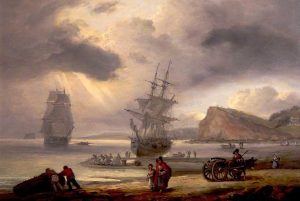 The book explores the perils and challenges faced by four British women writers of the Romantic period who ventured from home to embrace the world at large. Frowned on socially for stepping out, these unconventional women encountered and were influenced by the turbulence of the times, from the effects of the French Revolution to the uncertainties of juggling writing, motherhood, love, debt and the desire for independence.
The book explores the perils and challenges faced by four British women writers of the Romantic period who ventured from home to embrace the world at large. Frowned on socially for stepping out, these unconventional women encountered and were influenced by the turbulence of the times, from the effects of the French Revolution to the uncertainties of juggling writing, motherhood, love, debt and the desire for independence.
Dr Horrocks, based in the School of English and Media Studies on the Wellington campus, shares insights on writing the book, on the deeper implications of travel for women – then and now – and evolutions in ‘mobility studies’.
How did the idea for this book come about?
When I was doing my PhD at Princeton University, I was studying women writers from the late 18th century and Romantic period and was amazed by the richness and strangeness of their books. I was also acutely homesick and what I saw everywhere – in novels, poetry, and travel books – was uprooted-ness, and homelessness. There seemed to be vagrants, refugees, orphans, unmarried mothers without secure lodgings, feminists abandoned by their lovers in everything I read. The working title for the first version of the project was ‘Reluctant Wanderers’.
What particularly interested me was how radically different this was from how I’d been taught to think about movement and travel – both in my own life and in literature. Travel was meant to be about going out into the world, discovering oneself, and returning home victorious, somehow both wiser and better.
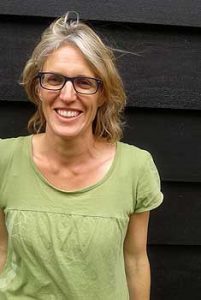 But mobility looked completely different in these texts. I became interested in unpicking influential ideologies that have taught us to see mobility as ‘freedom’ and, as a result, have obscured all the ways in which mobility can be painful, difficult, and continuous for some. My book looks at the ways writers sought to evoke what this feeling of economic and emotional insecurity feels like, in particular for women on the move. I see this as speaking directly into our current historical moment too.
But mobility looked completely different in these texts. I became interested in unpicking influential ideologies that have taught us to see mobility as ‘freedom’ and, as a result, have obscured all the ways in which mobility can be painful, difficult, and continuous for some. My book looks at the ways writers sought to evoke what this feeling of economic and emotional insecurity feels like, in particular for women on the move. I see this as speaking directly into our current historical moment too.
Who are the four women writers you focus on, and why did you choose them?
The four key British women writers I focus on are Charlotte Smith, Ann Radcliffe, Mary Wollstonecraft, and Frances Burney. I was interested in how ‘wandering’ disrupted different genres, so each chapter in the book is about a woman author working in a particular literary form. These writers are now at the centre of the new Romantic canon.
Charlotte Smith was a novelist and poet who started writing in debtors’ prison when she was 25 and had nine living children. The obvious fix for her financial woes, of course, was to begin writing poetry! Astonishingly, she managed to support her family by writing for the rest of her life. Her friend, the poet William Cowper, described her as “chained to her desk like a slave to his oar”.
As she was shunted from one temporary lodging to the next, Smith wrote about wanderers of all sorts, using her own experience to write about displacements. One of her poems I write about is an amazing long blank verse poem, The Emigrants, which explores what our material and ethical responsibilities are toward refugees. The refugees Smith [whose poetry was launched in a new edition co-edited by Dr Horrocks and published by Broadview Press last month] was writing about were those displaced by the French Revolution, who arrived by the thousands on Britain’s south coast in the bitter winter of 1792-1793, often in open boats and with nothing but the clothes they wore.
Ann Radcliffe is the mother of the Gothic novel – I was interested in what happened if we considered gothic heroines as the most coerced of wanderers.
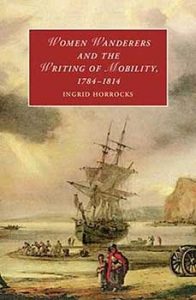 Pioneering feminist Mary Wollstonecraft is probably the most well-known author I write about. She felt endlessly homeless as an intellectual woman in her society. She’s best known for her ground-breaking work The Rights of Woman, but her most moving work is a beautiful travel book she wrote about a journey she took through Scandinavia with her baby in 1796. She’d been disappointed in the French Revolution, which she’d hoped would change women’s situation, and she’d been abandoned by her American lover. It’s an intensely melancholy work.
Pioneering feminist Mary Wollstonecraft is probably the most well-known author I write about. She felt endlessly homeless as an intellectual woman in her society. She’s best known for her ground-breaking work The Rights of Woman, but her most moving work is a beautiful travel book she wrote about a journey she took through Scandinavia with her baby in 1796. She’d been disappointed in the French Revolution, which she’d hoped would change women’s situation, and she’d been abandoned by her American lover. It’s an intensely melancholy work.
What she evokes is a kind of deep homelessness – literal, political, emotional and aesthetic – associated with feeling out of joint with the time in which she was living. Wollstonecraft went on to marry the political philosopher William Godwin and died giving birth to Mary Shelley.
Frances Burney had become a literary sensation in the 1780s with a novel about London society life, and is probably the best-known novelist of the late eighteenth century. Her long, digressive final novel is called The Wanderer or Female Difficulties. It tells the story of a female refugee from the French Revolution trying to find work and safe, secure lodgings in a British society that can only see her as a foreigner and outcast.
What Burney’s wandering heroine finally sees is a strikingly unjust society, unable to see that people’s sufferings are not necessarily a result of their errors. She sees a society of “failure without fault; success without virtue; sickness without relief; oppression in the very face of liberty; labour without sustenance; and suffering without crime”. It’s an astonishingly modern novel.
In the time frame of your book, leisure travel/tourism was clearly not something women did easily, often, or independently – what motivated these women to travel?
Part of what I aimed to do in the book is to shift what we think of as travel and find ways of illuminating all kinds of movement. Part of what’s exciting about this is it makes visible the very many ways in which women have always been on the move. So, Wollstonecraft is really the only figure I look at who would conventionally be seen as a traveller. But even she wasn’t a leisure tourist. There’s an exciting backstory to her journey: she was on a business trip on behalf of her ex-lover to find a stolen ship filled with silver being smuggled out of Revolutionary France. Wollstonecraft was also travelling in the hope of writing a book out of the journey that would help to make her financially independent, which it did to some extent. There were other women travellers at the time, but no one quite like Wollstonecraft. She tended to break most rules for women of her day.
Other authors, poets, and characters I write about move out of necessity: those displaced in various ways by war, divorced mothers living in insecure, rented accommodation, and orphans whose guardians prey on rather than protect them. I’m interested in what happens when we pay attention to these everyday kinds of movements, rather than simply movement that can be more easily conceived of as ‘travel’.
This kind of shift in attention to the everyday is exactly what’s happening in scholarship on contemporary movement in the interdisciplinary field of what’s called ‘mobility studies’. Even in the travel writing course I teach we talk a lot about travel as not being necessarily about voluntary movement, but for many people something that is forced upon them. We’re also mobile every day, not simply when we’re on ‘holiday’.
What role did the French Revolution play in the lives and writings of the women in your book?
The French Revolution is central to the British writings of the turbulent 1790s. Mary Wollstonecraft and Charlotte Smith in particular were early public supporters of the Revolution. Wollstonecraft wrote the first extended British response, her Vindication of the Rights of Men, which she followed up a year later with Vindication of the Rights of Woman. The books I write about mainly come after the ‘Terror’ of the September massacres in France in 1792, and out of an immense sense of disappointment and loss in the hope many British radicals had placed in the Revolution, including in changing options for women.
Also, the 1790s, following the Revolution and the subsequent declaration of war between France and England, was a period of extreme social, political, and economic upheaval. In this decade literal wanderers, from discharged soldiers, to emigrants, to war widows, to the growing ranks of the homeless, became more literally visible. Literary texts that told stories of troubled wanderers at this time were in part simply seeking to respond to, and represent, this historical reality.
Do you draw parallels between then and now for women travel writers?
I don’t do this explicitly in this book. In a travel book I wrote some years ago – Travelling with Augusta, 1835 & 1999 (Victoria University Press) – I compared my own experience as a young woman abroad to that of a woman traveller in the early nineteenth century.
What I do see in this [latest] book are parallels between these women’s lives and the difficulty of voicing the specifics of their situations – something still very much with us today. For example, Wollstonecraft was fierce in her rejection of the notion that as a wandering, unmarried mother she should be treated as an object of pity. What she wanted to draw attention to, instead, were the systemic social conditions that led to situations like hers. I kept thinking of Wollstonecraft during the fallout from the Metiria Turei controversy during the election. Whatever you think about how this was handled, it was striking the extent to which her story was reduced to an individual, personalised story – which you could either pity of revile – and how difficult it was to hear the wider story of a social failure Turei had sought to highlight.
What do you mean [in your introduction] by the traveller as ‘the emblematic modern subject’?
We live in an era where millions are uprooted by war, economics and climate change and even those who are not obviously on the move are often still subject to conditions such as insecurity of housing or work. The traveller embodies this sense of unsettlement, making it easier for us to see it. What’s particularly illuminating about the Romantic period is that this is the moment when we begin to see what will become a radical shift toward thinking in terms of mobility. We begin to see an ideological shift toward seeing mobility as freedom, which is central to neoliberal thought in ways that obscures just how unequal the experience of mobility is.
What are you working on at the moment?
I’m writing about New Zealand literature currently – in particular how New Zealand has been imagined in contemporary nonfiction writing. And I’ve also been writing and reading about swimming, as an embodied way to think about movement and how to engage with a particular landscape. I’ve got a travel piece coming out in the next Landfall about swimming in some of our most polluted rivers.
Still Waving Climate Change Creative Writing Competition: Read the Winning Entries
 We are delighted to have the authors’ permission to publish all the Still Waving Climate Change Creative Writing Competition shortlisted and winning entries. Congratulations to everyone who entered: the standard was uniformly high, and we were sorry we only had three prizes to award. Selecting just three was a challenge as there were so many fantastic pieces, and we have to say a huge thank you to our principal judge Dr Ingrid Horrocks, and to Dr Jack Ross, editor of Poetry NZ, who also assisted with the final results to make sure our judging was really thorough! Click on the titles below to read each item.
We are delighted to have the authors’ permission to publish all the Still Waving Climate Change Creative Writing Competition shortlisted and winning entries. Congratulations to everyone who entered: the standard was uniformly high, and we were sorry we only had three prizes to award. Selecting just three was a challenge as there were so many fantastic pieces, and we have to say a huge thank you to our principal judge Dr Ingrid Horrocks, and to Dr Jack Ross, editor of Poetry NZ, who also assisted with the final results to make sure our judging was really thorough! Click on the titles below to read each item.
Here are the judges’ selections:
Highly commended (shortlisted)
Janet Newman, Koputaroa, Horowhenua, for ‘Always’
Eden Shearer, Wellington, for ‘A Mother’s Fury’
Winners
1st Place
Sharron McKenzie, Christchurch, for ‘Grass Still Grows’
2nd place
Janet Newman, Koputaroa, Horowhenua, for ‘Flood’
3rd place
Melanie Ferguson, South Wairarapa, for ‘Recycling Worlds’
Well done to everyone!
Winning climate change creative writing
We are delighted to bring you the winning short story in our Still Waving Climate Action Creative Writing competition. From a very strong field, this is the piece chosen by our judges, creative writing lecturers Dr Ingrid Horrocks and Dr Jack Ross, as the outstanding item. To read others of the top items, click here.
Grass Still Grows
By Sharron McKenzie
Marianne pulled the cover over the printing press, and packed the last of the slim volumes in the bags on the floor. The nagging ache in her gut gave a sharp twinge as she bent down. Indigestion, she told herself, but she knew it wasn’t. Knowing did no good, anyway. No more chemo, no more wonder drugs. There hadn’t been a shipment of any drugs from overseas in years. These days, if you couldn’t make it locally, you went without.
She slung a bag over each shoulder and shuffled down the hallway, smiling at Mrs Niroshan, who was tiredly walking back and forth trying to quiet the baby. Behind the closed door of the second bedroom she could hear raised voices. At least the authorities were only sending her one refugee family at a time these days, while they waited for their place on the inland convoys. There had been times when she’d packed up to eighteen people into her three bedroom house.
Melba greeted Marianne with a loud “Meeeehhhh!” from her stall in the garage. The goat shifted impatiently as Marianne attached the carrier bags to her harness.
“Dude,” she said to the goat, as they walked out to the street. “Where’s my driver-less car?”
Melba knew the answer to that one. “Meee!”
“Goats go where goats want to go. I don’t think that counts as driver-less!”
She could feel warmth in the wind from the east, bringing a swampy stench with it. And barely spring yet, Marianne thought. The mosquitoes would be hatching in the brackish marsh that covered the remains of eastern Christchurch.
She could hear high pitched giggles as two little boys played in the water-filled pothole that spanned half the street, conducting a naval  battle with tiny ships made from flax stems. Dot’s granddaughter was hanging out washing in her front yard as Marianne passed, singing in a pure high soprano.
battle with tiny ships made from flax stems. Dot’s granddaughter was hanging out washing in her front yard as Marianne passed, singing in a pure high soprano.
Rain still falls and the grass still grows,
Boy sees girl, you know how it goes.
Dot was leaning on the gate watching the kids, and Marianne stopped, yanking at Melba’s rope when she tried to sample a roadside patch of cabbages.
“Here,” Dot said. “I saved some carrot tops. Did you hear about the latest reading? 10.73 metres! I always wanted a seaside property.” She never seemed to tire of that joke.
“Better get that bikini ready,” Marianne countered, as she always did, and Dot cackled happily. The truth was there were no more beaches. There was no edge to the ocean any more. It had gulped down half the city, and vomited back a swamp of stinking mud and twisted wreckage.
The last ten years had been a frantic race against the tide to render down buildings and infrastructure to their constituent parts. Everything of possible use, including topsoil and trees was removed by the Locust Army, to be loaded onto the electric trucks travelling inland, to the new cities. Fairlie, Ranfurly, and even sleepy Naseby, had been transformed as the coastal refugees fled to higher ground.
Melba plodded around the corner, a carrot top dangling from her lips. Marianne let the goat pull her along, thinking back over the years. When was it? Was there one particular day? That day we finally realised things were never going to get better?
There were those pictures on th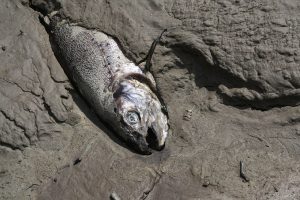 e news, back when they still got television broadcasts. That shaky video shot with a phone from the last plane to leave Kiribati. The crowds pressing against the chain link fence at the airport. The wave of brown water churned up by the plane’s wheels as it moved down the runway. The view of that young woman below, waist deep in the swirling water, holding up her baby over her head, mouth open in a silent O as the plane lifted away. Was it then, when the first nation drowned? Or had they still thought something could be done?
e news, back when they still got television broadcasts. That shaky video shot with a phone from the last plane to leave Kiribati. The crowds pressing against the chain link fence at the airport. The wave of brown water churned up by the plane’s wheels as it moved down the runway. The view of that young woman below, waist deep in the swirling water, holding up her baby over her head, mouth open in a silent O as the plane lifted away. Was it then, when the first nation drowned? Or had they still thought something could be done?
Was it the summer the farmers built pyres of black and white carcasses, sending columns of stinking smoke rising up from the plains, after the ships stopped coming and the dairy industry collapsed?
Was it the winter that the flood waters covered south Dunedin, the Hutt Valley and Greymouth, and never receded?
Or that summer the meteorologists added new colours to their temperature maps, and half of Australia went up in flames? Or the autumn that the first F6 hurricane hit the Caribbean joined up?
Was it the neo-dengue fever epidemic of 2037, or Black Tuesday when the banks went down for good?
Or that one terrible night when a dirty bomb rendered Sydney uninhabitable. And then likewise Chicago, Los Angeles, Tel Aviv, Manchester and Marseilles? Or the vicious twelve day war that turned both North and South Korea into radioactive wastelands, and the last frantic flailing ‘accidental’ missile strikes that took out Japan and half the coastal cities of China?
Marianne shook her head. Maybe it was a different day for everyone who’d lived through the last twenty five years. She tied Melba to a post outside the old supermarket, now filled with a combination farmer’s market and traveling garage sale. A hand painted sign in the window of the old pharmacy offered “Books, Drugs and News for Sale. Gossip for Free.”
Marianne stuck her head in the door. “Hey, Sam,” she said. “Got a fresh batch for you.”
“Marianne, lovely to see you,” Sam said, stepping outside to help her carry the bags inside. He laid the slim volumes on the counter, one hand absently scratching the lumpy melanoma on his left ear.
“Diphtheria, symptoms and treatment,” he read slowly. ”What else have we got here? Goat husbandry, compost toilet construction, Ross River virus, radio operation and repair. Excellent. Riveting reading as always, Marianne.”
“At least I achieved my life’s ambition,” she said, with mock hauteur. “I am a published author, with sales in the hundreds.”
“We should have a book launch party.”
“Oh yes, with wine, and those little canapes on silver trays!”
Sam laughed. “I really don’t know where I’d get the smoked salmon and crackers.” He took out a small notepad and added up some figures.
“With what you brought me today, here’s what you have to spend. What can I get for you?”
She was looking out the window at the hills. “Something from the back room. I need 200 mg of morphine, Sam.”
“Oh, my dear,” he said. “So soon?”
She avoided his eyes. “Not yet. But I’d like to be ready. I don’t know how much longer I’ll be mobile.”
He looked at her for a moment longer, then turned and unlocked the door behind the counter. He returned with a small plastic container.
“Send word when it’s time,” he said, coming with her to the door. “I’ll come around.”
“I will,” she promised. “I’ve put some books aside for you.”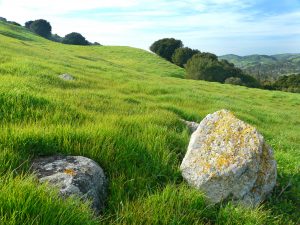
Outside, Melba had finished the carrot tops and was chewing on her lead rope, a thoughtful expression on her face.
“Come on, you silly goat,” Marianne said. “Let’s go to the park and you can have grass for lunch.”
“Meh,” Melba said, agreeably.
Marianne looked up at the green hills as they walked. Rain still falls and the grass still grows, she thought. Maybe I have not had that one particular day yet.
Climate Change Creative Writing – Third Place Winner
“R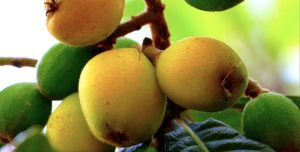 ecycling Worlds: A Collation of Works”
ecycling Worlds: A Collation of Works”
By Melanie Ferguson
Author’s note: “This piece deliberately enacts a recycling, by reusing and repurposing fragments of older works, that are fully referenced in footnotes. The words used are from four countries and three centuries, connecting ideas across time and space. All borrowings of material in this essay are limited to brief passages used for critical purposes, and are fully acknowledged in the references. I apologise in advance for any inadvertent infringements of copyright, which I will be happy to rectify as soon as they are brought to my attention.”
I stood in my garden pulling loquats off the tree and eating them to be full of spring[1]; a tree that may have spent further time as a house or classroom, or a bridge or pier. Or further time could be spent floating on the sea or river, or sucked into a swamp, or stopping a bank, or sprawled on a beach bleaching among the sand, stones and sun[2].
The train went on up the track out of sight, around one of the hills of burnt timber[3]. And further west on the upper reaches the place of the monstrous town was still marked ominously on the sky, a brooding gloom in sunshine, a lurid glare under the stars[4]. I said his heaven would be only half alive; and he said mine would be drunk; I said I should fall asleep in his; and he said he could not breathe in mine[5]. A ray peers into the room of your eye . . . . Why is our art so introverted? It doesn’t mean a thing – to the seagull or sun – the clouds don’t understand – a word – their language is silence[6]. His mouth opens. From inside him comes a slow stream, without breath, without interruption. It flows up through his body and out upon me… washing the cliffs and shores of the island, it runs northward and southward to the ends of the earth. Soft and cold, dark and unending, it beats against my eyelids, against the skin on my face[7]. And if several people talk at once an overlapping howling noise begins, echoes generate echoes[8]; our apparitions, the part of us which appears, are so momentary compared with the other, the unseen part of us, which spreads wide, the unseen might survive, be recovered somehow attached to this person or that, or even haunting certain places, after death. Perhaps – perhaps[9]; the tree, after a lifetime of fruiting, has, after its first death, a further fruiting at the hands of a master. This does not mean that the man is the master of the tree… He is master only of the skills that bring forward what was already waiting in the womb of the tree[10].The new things born there console or constellate they measure space they keep time. But who wrote this story? And before writing who told it to us that we tell it over and over? [11] With what ineffable pleasure have I not gazed – and gazed again, losing my breath through my eyes – my very soul diffused itself in the scene[12]; You are of me and I of you, I cannot tell – Where you leave off and I begin[13].
[1] Michele Leggott, “a woman, a rose, and what has it to do with her and they with one another?”, as far as I can see. Auckland: Auckland University Press, 1999.
[2] Patricia Grace, p. 7, Potiki. 1986. Auckland: Penguin, 2010.
[3] Ernest Hemingway, p. 133, “Big Two Hearted River: Part I.” In Out Time. 1925. New York: Macmillan, 2003.
[4] Joseph Conrad, p.5, Heart of Darkness. 1899. London: Penguin, 2007.
[5] Emily Bronte, p. 180, Wuthering Heights. 1847. Great Britain: Wordsworth Editions, 2000,
[6] Graham Lindsay, from “Cloud Silence” The Subject. 1994. Retrieved from NZEPC Oct. 5th, 2017.
[7] J.M. Coetzee, p. 157, Foe. 1986. London: Penguin, 2010.
[8] E.M. Forster, p. 137, A Passage to India. 1924. London: Penguin, 2010.
[9] Virginia Woolf, p. 129-30, Mrs Dalloway. 1925. Oxford: Oxford University Press, 2009.
[10] Patricia Grace, p. 7, Potiki. 1986. Auckland: Penguin, 2010.
[11] Michele Leggott, from the back cover of DIA. Auckland: Auckland University Press, 1994.
[12] Mary Wollstonecraft, p.72, Letters Written during a Short Residence in Sweden, Norway, and Denmark. 1796. Canada: Broadview Press, 2013.
[13] Susan Howe, Articulation of Sound Forms in Time. Windsor, VT: Awede, 1987.
Climate Change Creative Writing – Shortlisted
By Eden Shearer
Mother will not stop yelling
She is casting cyclones
That are destroying precious lives
She has become a home-wrecker
Sowing the seeds
Of volcanic eruptions
She is angry
Causing innocent feet
To flee from their homes
To run far away
We are too scared to look her in the eye
So we keep running
Hoping for grass that is greener on the other side
Only to find that there is nothing left
When will we learn
To stop arguing with our Mother
And to start implementing change?
It is about time we cleaned up our mess
And as they always say, Mother knows best
It is too late to diffuse her temper completely
But we can still use our actions
To decelerate her intensity
Let’s turn mindlessness
Into mindfulness
Oh Mother Earth, we can hear you.
Climate Change Creative Writing – Shortlisted
By Janet Newman
The river always
finds a way
down from the ranges
through the plain
to the sea
although sometimes it takes
a circuitous route
around corrals of cliffs,
sometimes cross country,
clear across old stones
because the river has a way
of folding back
on its way forward,
lengthening and stretching out long and wide
as it takes its time
as it longs to find its way
by longing for the sea
and in longing reveals
the length of its persistence
which is something to long for
however slow
the way any life
sometimes doubles back,
folding and looping
because the river
always finds the sea
by following
a doubtless course
sometimes doubling back
but always moving
eventually
forward.
Climate Change Creative Writing – Second Place Winner
By Janet Newman*
When the floodwaters rose up
covering the plain with mirrors and veils
our backyards looked like other people’s
and the roads we drove failed under rivers
that seemed to have been there longer than we had.
Belongings stacked on pool tables sagged.
Sixteen sand bags might as well have been a cache of illegal toheroas
for all the good they could muster
against the weight of water
spilling over the stopbanks.
When the floodwaters rose up
we sank down
into our steamed-up cars if we could find them,
our fire-warmed lounges if we could reach them,
watching the rain gauge, the tide times,
the insurance claim, the surge line.
We wrote everything down in the record books
but the numbers didn’t look like much
because we’d stopped feeling
like we were the ones who counted.
When the floodwaters rose up
we sank back down to the bush
and the powelliphanta snails
and the katipo
clinging to waterlogged webs
and peketua, paddling,
holding up their heads.
*Flood was first published in Atlanta Review (New Zealand) Spring/Summer 2017 and is republished here with kind permission of the editor.
